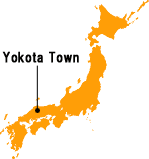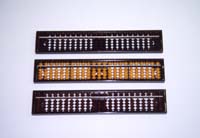

 |
||

|
Traditional craft created by a master artisans
using superior materials

The soroban which is a type of abacus, mainly used in East Asia, is a kind of manual calculator that uses beads as counters. It is said to have been introduced to Japan from China in the mid-16th century. Compared with models found in other countries, the Japanese abacus is smaller and easier to carry. Unshu (present-day the eastern part of Shimane Prefecture) in West Japan is a place that has long been associated with soroban production. The abacuses made here are known as Unshu soroban. Unshu soroban is said to have been first made in the late Edo period (19th century) when Kichigoro Murakami, a carpenter, who lived in Kamedake, Nita Town, made a type of abacuses based on those that came from Hiroshima Prefecture, located immediately south of Shimane Prefecture. Materials found locally such as oak, plum wood, and smoked-dried bamboo, were used for Unshu soroban.
In 1985 the Ministry of International Trade and Industry chose the Unshu soroban as a traditional craft whose diffusion should be promoted. The area centered on Yokota Town continues to craft 70% of the abacuses currently produced in Japan. Photos: Three pieces of Unshu Soroban (Japanese abacuses), An artisan making Unshu Soroban (Unshu Soroban Kyodo Kumiai) Unauthorized reproduction of the
photos in this page is prohibited. Related Links: |
|

